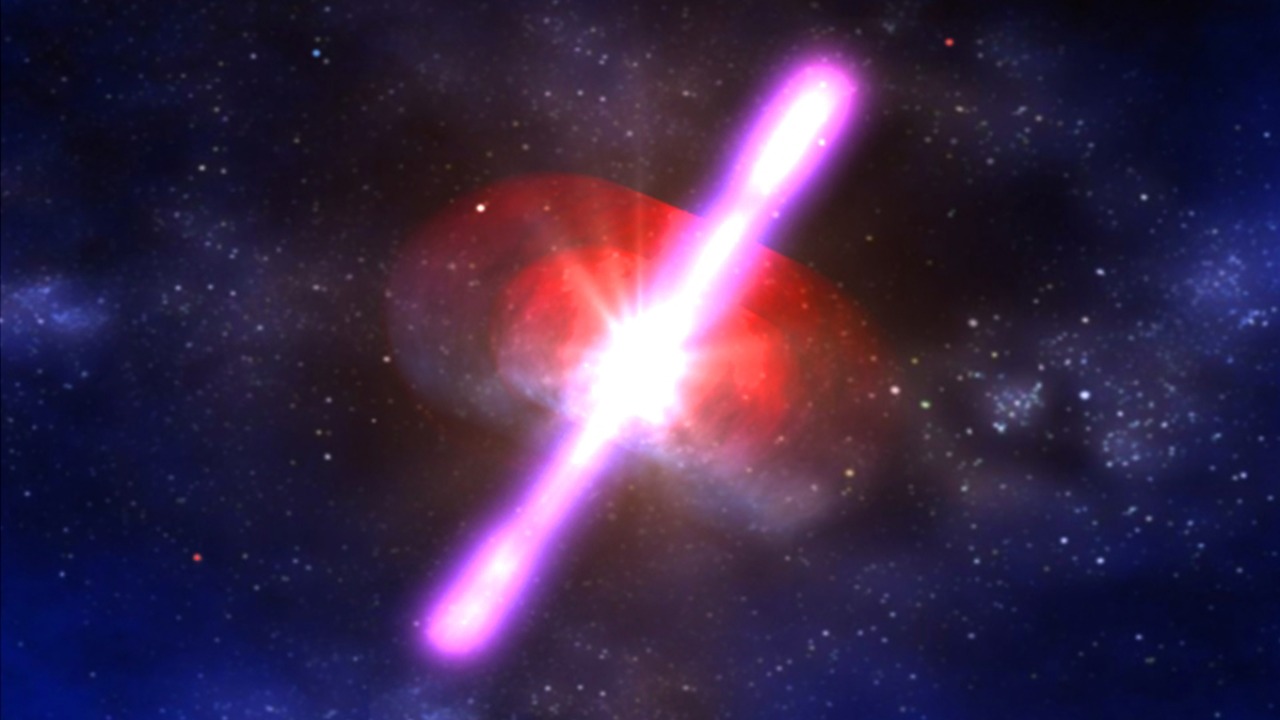
In a remarkable cosmic event, astronomers have detected a black hole-star merger that has resulted in the longest gamma-ray burst ever recorded. This event not only shatters previous records in duration and intensity but also provides invaluable insights into the cataclysmic collisions that occur in the cosmos. This discovery builds upon earlier observations of a neutron star merger that generated the second-largest gamma-ray burst and a unique supernova that offered a rare look into the explosive death of a star.
Understanding Gamma-Ray Bursts
Gamma-ray bursts are the most luminous electromagnetic events known to occur in the universe. These bursts are often the result of the merger of compact objects such as black holes or neutron stars. While most gamma-ray bursts are short-lived, lasting only a few seconds to minutes, there are exceptions. Longer bursts are typically associated with specific types of stellar collapses, providing a unique window into extreme physics in distant galaxies.
The Black Hole-Star Merger Dynamics
The recent black hole-star merger is the driving force behind the longest gamma-ray burst ever recorded. In this event, the black hole disrupts and accretes the star’s material, leading to a prolonged release of energy over extended timescales. This process, known as tidal disruption, is a key feature of such events. The location of this event in a distant galaxy underscores its rarity, as our current understanding of binary systems suggests that such occurrences are far from common.
Detection of the Record-Breaking Event
The initial detection of this record-breaking event was made possible by space-based telescopes that captured the extended emission phase of the gamma-ray burst. Follow-up observations confirmed the signature of a black hole-star merger through multi-wavelength data. The official announcement of this longest-duration burst was made on October 18, 2025, marking a significant milestone in the field of astrophysics.
Comparison to Prior Gamma-Ray Bursts
When compared to previous events, the current gamma-ray burst stands out in terms of its duration and intensity. For instance, the second-largest gamma-ray burst, which resulted from a neutron star merger, was shorter in duration. Similarly, other long bursts associated with supernovae, such as the unique supernova observed in August 2025, were also shorter. The exceptional length of the gamma-ray burst from the black hole-star merger can be attributed to the unique dynamics involved in such events.
Insights into Stellar Explosions
The aftermath of the black hole-star merger bears some resemblance to a supernova, offering a rare glimpse into the violent end of massive stars. The intense gravitational pull of the black hole triggers a partial supernova-like ejection of material, resulting in explosive dynamics. These observations contribute to our understanding of cosmic explosions and how they differ from standard core-collapse supernovae.
Formation of Rare Cosmic Elements
The gamma-ray burst from the black hole-star merger plays a crucial role in a massive cosmic explosion that synthesizes rare elements like gold and platinum through a process known as rapid neutron capture. Observations from the James Webb Space Telescope have revealed element creation in the kilonova phase of a similar event. Given the scale of the black hole-star merger, it is plausible that it could lead to even greater production of these rare elements.
Implications for Astrophysics
The detection of the longest gamma-ray burst has significant implications for our understanding of black hole growth and stellar evolution in binary systems. It also contributes to our knowledge of the distribution of heavy elements in the universe, which is influenced by events like neutron star mergers and kilonovae. Looking ahead, astronomers will likely refine their observational strategies to detect similar rare mergers, paving the way for further advancements in the field.